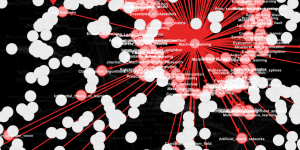Wikipedia in Python, Gephi, and Neo4j: Vizualizing relationships in Wikipedia by Matt Krzus.
From the introduction:
We have had a bit of a stretch here where we used Wikipedia for a good number of things. From Doc2Vec to experimenting with word2vec layers in deep RNNs, here are a few of those cool visualization tools we’ve used along the way.
…
Cool things you will find in this post:
- Building relationship links between Categories and Subcategories
- Visualization with Networkx (think Betweenness Centrality and PageRank)
- Neo4j and Cypher (the author thinks avoiding the Giraph learning curve is a plus, I leave that for you to decide)
- Visualization with Gephi
Enjoy!
